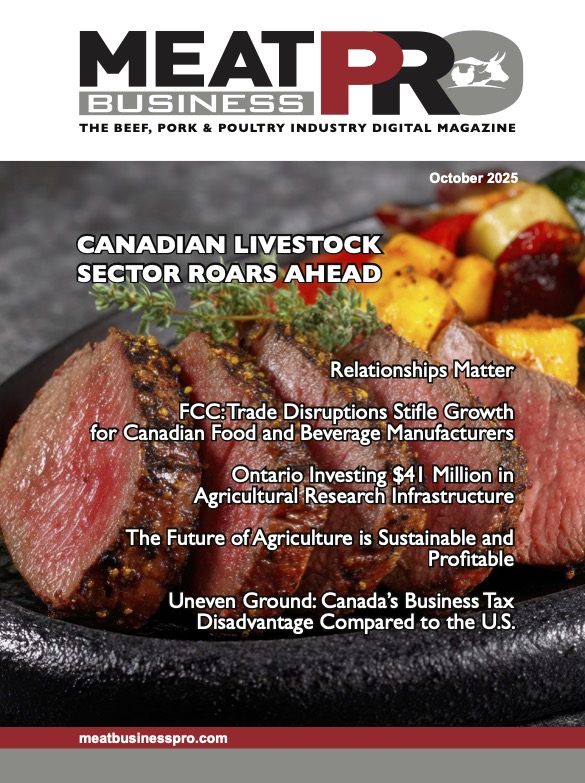Retaliation For US Tariffs Begins

U.S. farmers and food producers are in the cross-hairs of a global trade conflict that shows no signs of abating anytime soon — and things are about to escalate in a big way on Sunday.
New tariffs will be imposed by Canada on beef, and more retaliation will come this week when China and Mexico take aim at pork. China’s also planning a 25 percent tariff on soybeans on July 6 in addition to hikes on pork duties, and Mexico’s 20 percent levy on “the other white meat” is set to begin July 5.
Meanwhile, the European Union’s initial duties worth $3.2 billion took effect June 22. Most of the duties amount to 25 percent, and include a variety of U.S. products, including motorcycles, boats, whiskey and peanut butter. All three U.S. allies announced new tariffs in response to the Trump administration’s decision to impose levies on imported steel and aluminum products for “national security” reasons .
Separately, China is preparing to unleash a wave of new tariffs of 25 percent on 545 U.S. products valued at $34 billion , including soybeans and some dairy products. The duties become effective July 6, with U.S. autos also a target of Chinese import duties.
“It really puts us with a big bull’s eye on our back, you might say, because agriculture is usually and first and the easiest to implement”
Canada strikes back
For Canada, tariffs of 10 percent are being imposed on about $12.5 billion worth of U.S. products. Starting Sunday, a wide range of U.S. staples will be hit, including chocolate, ketchup, yogurt, beef, caffeinated roasted coffee, orange juice, maple syrup, salad dressing and soups.
Dairy is one of the sticking points between the U.S. and Canada in renegotiation of NAFTA , the North American Free Trade Agreement — but it’s probably not the reason Ottawa selected yogurt for tariffs . Instead, it may have been done to get the attention of House Speaker and Wisconsin Republican Paul Ryan . Canadian imports of yogurt from the U.S. totaled a mere $3 million last year, and mostly came from a plant located in Wisconsin.
Also, by selecting soups the Canadian government may have had a message for New Jersey-based Campbell Soup CPB , which in January announced plans to halt production of soup and broth in Canada and cut about 380 jobs. Campbell did not immediately respond to CNBC’s request for comment.
Ottawa released a final list of products facing tariffs on Friday, and it included some new products such as pillows but removed mustard. Ketchup stayed on the final list along with toilet paper and whiskey.
Kraft Heinz’s KHC ketchup is the market share leader in Canada but the U.S.-based company closed a factory in Leamington, Ontario back in 2014 and trimmed more than 700 jobs. French’s, the mustard maker, sells Canadian-made ketchup, in a partnership with Toronto-based Select Foods Products.
“As a global food company, Kraft Heinz opposes trade policies that impose taxes or tariffs on our products,” company spokesman Michael Mullen said in an emailed statement to CNBC. “NAFTA has been in place for more than 20 years and we have developed supply chains that run across North America.”
American exports of sauces and condiment products to Canada totaled approximately $650 million last year, according to data from analytics firm WiserTrade. The U.S. sold about $55 million in whiskey to Canada in 2017.
‘Kick in the shin and the elbow’
About 95 percent of the products on Beijing’s target list are from agriculture or food sectors, including soybeans — one of the most critical exports in the U.S. farm economy.
Farmers have been bracing for the consequences of soybean tariffs, since it could hammer a lucrative export market, reduce profits and have ripple effects across the rural economy.The U.S. could see an economic loss of $3 billion from the soybean tariffs, according to Purdue University estimates.
China buys about half of the U.S. soybean exports, or about $14 billion annually , and roughly one in three rows of soybeans grown on the nation’s farms goes to the world’s second-largest economy, according to the American Soybean Association.
“It really puts us with a big ‘bull’s eye’ on our back, you might say, because agriculture is usually and first and the easiest to implement (tariffs) and to get everyone’s attention — and they’re sure doing that,” said soybean farmer Richard Guebert Jr., president of the Illinois Farm Bureau.
China’s tariff action is in response to the White House’s announcement on June 15 to slap 25 percent duties on Chinese goods, mostly on items from aerospace, robotics and machinery industries. The bulk of those duties, or about $34 billion worth of imports from China, will see levies collected starting on July 6.
Yahoo Finance












